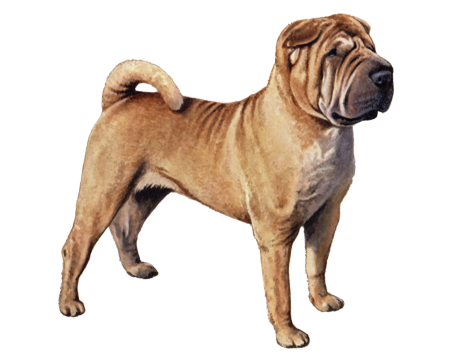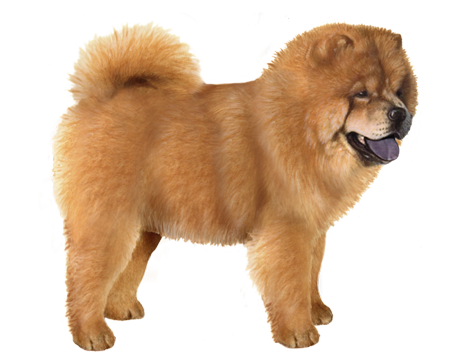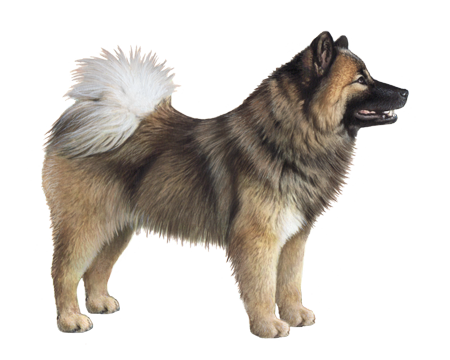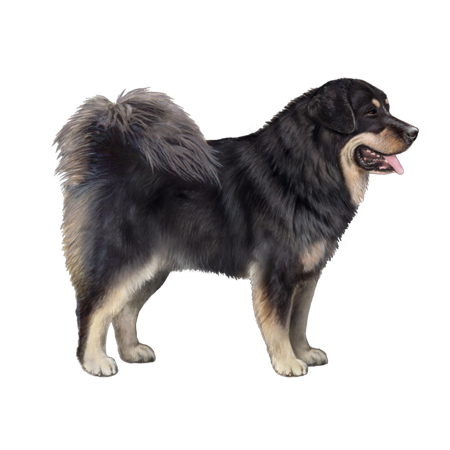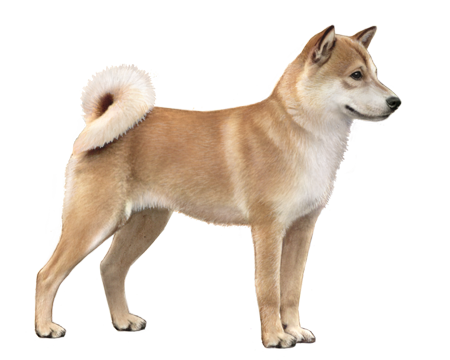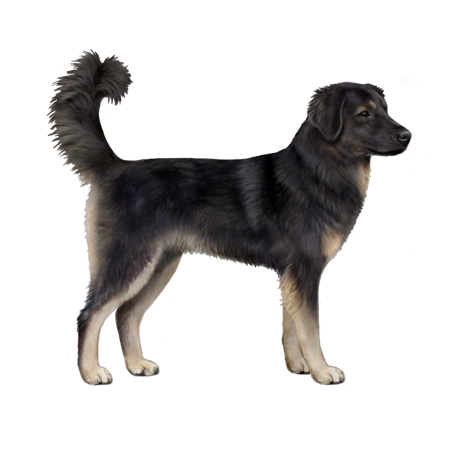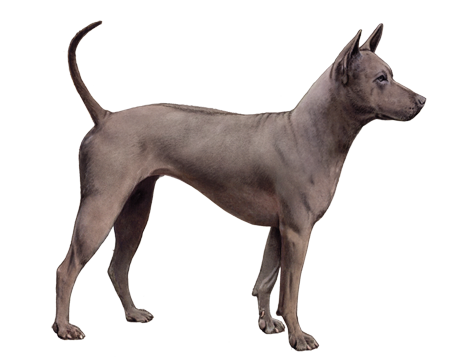
West Siberian Laika
West-Siberian Laikas are intelligent, lively, versatile hunting dogs. They have a friendly, social nature and make loyal family companions.
Interested in discovering if your dog is a West Siberian Laika?
Check out Wisdom Panel's DNA tests.

West Siberian Laika Traits
General Appearance
West-Siberian Laikas are medium-sized, powerfully built dogs with a wolf-like appearance.
Coat and Colouring
Laikas have a thick double coat that protects them in arctic conditions. The hair is short on the head, ears, and front of the legs. Longer hair appears on the withers, neck, shoulders, and back of the legs and forms a beard, collar, and breeches.
The West-Siberian's coat comes in white, salt and pepper, red, and all shades of grey. Solid black dogs and white dogs with patches of salt and pepper, red, or grey are also allowed under the breed standard.
Distinctive Physical Traits
Laikas have a wedge-shaped head, dark, oval eyes, prick ears, and a tail that curls over the back.
West Siberian Laika Temperament
West-Siberian Laikas are affectionate, social dogs. They're loyal to their family and friendly toward strangers. That said, these pups will defend themselves if provoked by another dog.
Laikas have a lot of endurance and need plenty of opportunities to burn off energy every day. If they get bored, they may turn to destructive behaviors.

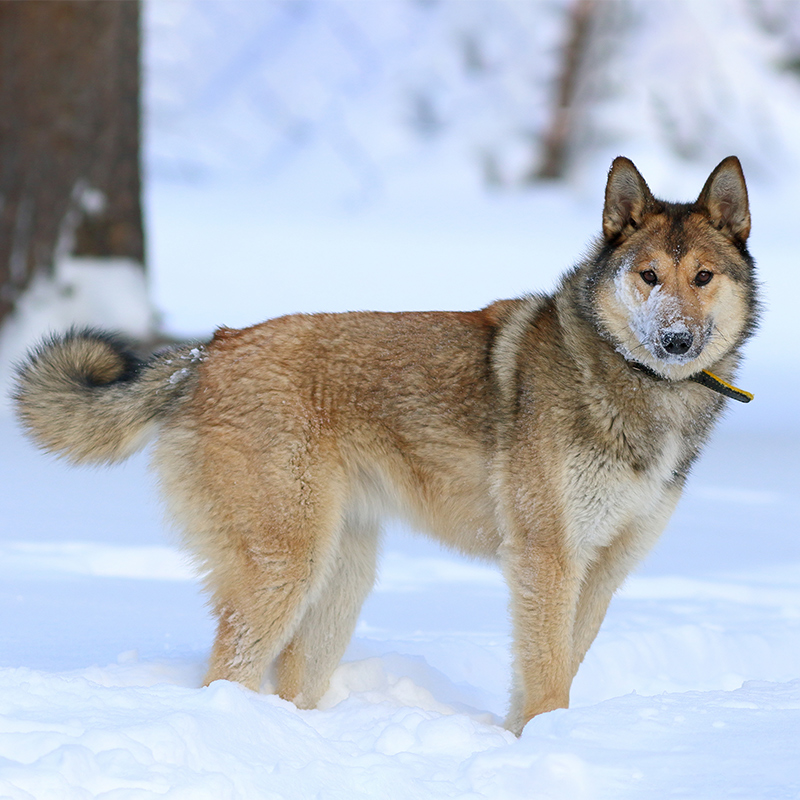
West Siberian Laika History
The West-Siberian Laika belongs to the Spitz family of dogs. One of several Russian Laika breeds, they originated in North Ural and West Siberia. Experts believe the Laika's ancestors crossed with wolves and were selectively bred for temperament, and that the result of that effort is the breed we know today.
Originally kept as farm dogs by aboriginal people living in the outlying parts of Russia, West-Siberian Laikas caught the attention of hunters in the 1920s. Their strong instincts and persistence made them excellent all-around hunting dogs for birds and assorted small game.
The melodious bark Laikas use when they locate game is how they got their name. The Russian word "laika" is a noun derived from the verb "layat," which means "barker."
The UKC recognized the West-Siberian Laika in 1996.
West Siberian Laika Care
Nutrition
Laikas thrive on a high-quality diet formulated for their activity level, medium size, and life stage (e.g., puppy, adult, senior). To help your dog maintain a healthy weight, keep an eye on their food intake—including treats. As a rule, treats should make up no more than 10% of a dog's calories.
Grooming
Laikas are naturally clean dogs that don't generally require bathing. But their thick coats do need regular brushing to remove loose hair and prevent mats and tangles.
Most of the year, brushing with a pin brush once or twice a week will suffice. But during seasonal shedding periods, daily brushing is essential to keep the hair from getting out of control.
Lastly, nail trims, ear cleanings, and teeth brushing should be part of their regular at-home care.
Exercise
This active breed requires daily exercise to stay happy and healthy. Long walks, hikes, and opportunities to run in a fenced backyard will give them an outlet for their boundless energy.
Training
Intelligent dogs, West-Siberian Laikas are eager to learn. But they don't respond well to harsh methods, so be sure to approach training in a gentle, positive manner.

Breed Group
Asian and Oceanian
The Asian and Oceanian group is comprised of breeds whose origins lie in Asia, which have spread as far as Australia, the islands of the Pacific, and the Arctic. This group is possibly the most ancient of all breed groups and were bred for a variety of purposes, including guarding, hunting, and as draft dogs.





